File Management for Music Producers
A Soft Synced Companion Guide
Soft Synced Environment → Beginner Track → The Basics Course → Lesson 8
Introduction
File management may not feel as creative as sound design or mixing, but it directly impacts how smoothly you can work. A well-structured system means less time searching and more time producing. Think of it as infrastructure: invisible when it works, painfully obvious when it doesn’t.
Core Concepts
Project Folder Structure
Every project should have its own master folder with subfolders for:
Project File (your DAW session)
Audio Files (recordings and bounced stems)
Samples (custom or one-shot sounds)
Exports (drafts, mixes, final bounces)
Notes (lyrics, reference tracks, session logs)
This ensures all assets stay connected and nothing goes missing when you move the project between computers.
Sample Library Organization
Sorting samples by type (drums, bass, leads) and optionally by mood (dark, chill, uplifting) makes browsing intuitive. Most DAWs support some version of categories such as tags where you can add BPM and key these details, which can save hours when searching later.
Version Control
Instead of overwriting, save iterations as Project_v1, Project_v2, and so on. Add markers like _MixA or _ArrangementB, if you’re testing alternatives. This protects against dead ends and gives you freedom to experiment without fear of losing progress.
Backups
Hard drives fail. Regularly back up your work to both an external drive and a cloud service. Automation (e.g., Time Machine, Dropbox sync) reduces the risk of human error. Consider a weekly schedule as the minimum baseline.
Naming Conventions
Generic filenames like Audio_001 aren’t very helpful. Descriptive names like Dark_Piano_Cm_120BPM tell you the instrument, tonality, and tempo at a glance. The more info in the name, the easier your workflow becomes months down the line.
Producer FAQs
-
Most DAWs do a decent job of collecting recordings, samples, and backups into their own hidden folders, but this system breaks down quickly when you start moving projects around. If you collaborate with someone else, send your work to another computer, or revisit the project months later, you’ll often find missing audio files or broken sample links. By setting up a dedicated project folder with subfolders for audio, exports, and notes, you create a structure that is portable and transparent. It’s the difference between trusting the DAW to handle everything in the background and taking control so you know exactly where each part of the project lives.
-
Cloud services are convenient, but they’re not a complete solution. Sync errors can leave you with outdated versions, account issues can block access, and large sessions often take hours to upload. That’s why professionals usually follow the “3-2-1 rule”: keep at least three copies of your data, on two different types of media, with one copy off-site. For a producer, that might look like your main drive (working copy), an external hard drive (local backup), and a synced cloud folder (off-site). This layered approach protects against both technical failures and human error.
-
Versioning is a balancing act between clarity and clutter. Saving one new version every session is a safe habit because it guarantees you can always roll back. On top of that, mark milestones deliberately: save extra versions when you make major arrangement changes, print a new mix, or prepare for mastering. Instead of dozens of nearly identical files, you’ll end up with a trail of meaningful points you can return to. This not only prevents losing good ideas but also gives you a clear record of how the track evolved.
-
Names are about recall. If you’re juggling house, hip-hop, and ambient projects, generic titles like “Track1” or “Beat5” will slow you down months later. A better approach is to embed shorthand into your filenames: include genre, key, and tempo (DeepHouse_Amin_124BPM_v3). That way, you know immediately what the session contains without having to open it. Over time, these conventions also help you spot patterns in your own work — for instance, realizing that you tend to write in certain tempos or keys, which can inform where you want to push yourself creatively.
Quick Reference
Folder Structure
Project File • Audio Files • Samples • Exports • Notes. Keep everything in one master folder.
Versioning
Never overwrite. Save incremental versions (_v1, _v2) to capture progress and maintain flexibility.
Backups
Use both external drives and cloud storage. Redundancy is insurance against data loss.
Next Steps
Organized files turn chaos into reliability. With a clear structure, you can experiment freely, knowing your work is secure and recoverable.
Next up: the unique strengths of audio and MIDI that can transform how you create and edit music.
The Guides are your reference. The app is your journey.
